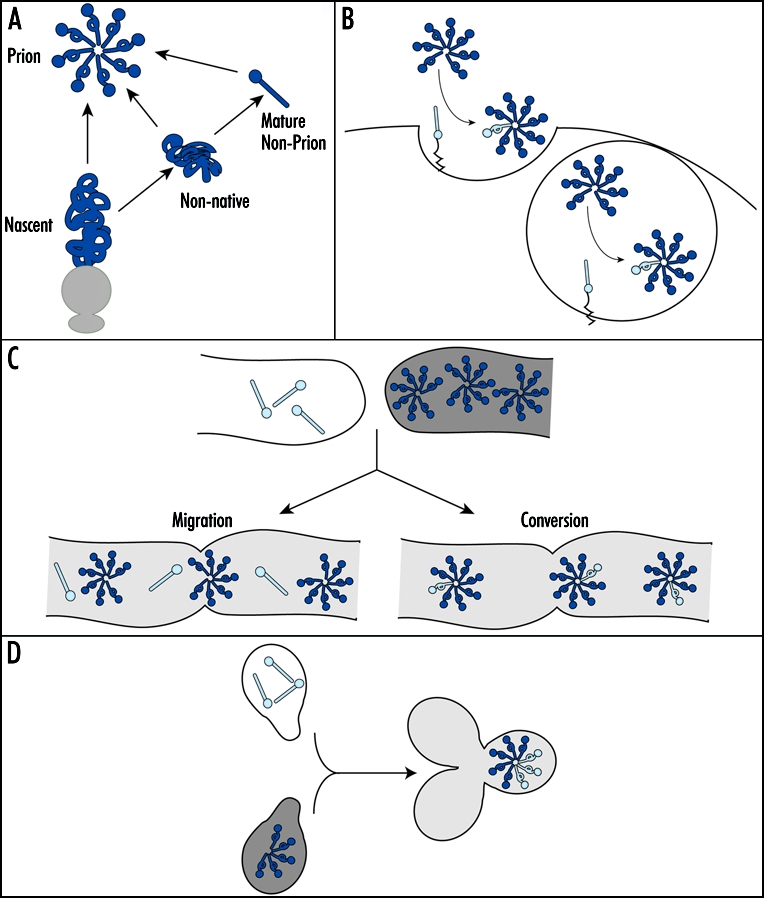Figure 2.

In vivo prion conversion. (A) In vivo, a prion protein (dark blue) may convert to the prion form at multiple points during its biogenesis pathway (see text for details). (B) PrPC (light blue ball and stick) likely converts to the prion form (dark blue ball and loop) at the cell surface (left) or in endocytic vesicles (right). (C) The prion phenotype is transmitted from a [Het-s] prion strain (dark gray) to [Het-s*] non-prion strain (white) through cytoplasmic mixing following hyphal fusion (light gray). This transmission may occur either through the migration of existing [Het-s] complexes (dark blue) into the [Het-s*] recipient and/or via the conversion of existing non-prion state protein (light blue ball and stick) to the prion form (light blue ball and loop). (D) Upon mating, a [psi-] cell (white) to a [PSI+] cell (dark gray), the prion phenotype establishes dominance via incorporation of existing non-prion state protein (light blue) into the introduced prion complexes (dark blue).
